The Question Concerning Iron Man’s Technology
Since it began with Iron Man, the Marvel Cinematic Universe has been built on technology. From the plots of the movies – which often revolve around recovering pieces of technology or preventing them from falling into the wrong hands#, to the heroes themselves and the origins of their powers# – the technological pervades Marvel’s storytelling. However, it wasn’t until last summer’s Avengers: Age of Ultron that the Marvel films began questioning the central role of technology in the lives of their characters; wondering if technological creations are controllable, or whether they will always have unforeseeable consequences.
Marvel’s latest film, Captain America: Civil War, even went so bold as to provide an answer; delivered by its most philosophical character, The Vision, who affirms superheroics (technological creations, in this non-superpowered world of ours) act fundamentally independently from their creators –
– perhaps going as far as to determine the actions of them:
One need not look further than Iron Man to find an example of this phenomenon; the hero who blatantly nominally embodies the harmonious juxtaposition of man and machine#. Still, to truly understand this complex relationship between technology and mankind – exemplified best in the Marvel Universe by Tony Stark and the Iron Man suits he has created – we must turn to an external source that can guide us through the metaphysical minefield modern technology presents…
This source – the one that informs The Vision’s view, and which has enframed the Marvel Universe since its inception – is the essay The Question Concerning Technology by Martin Heidegger.
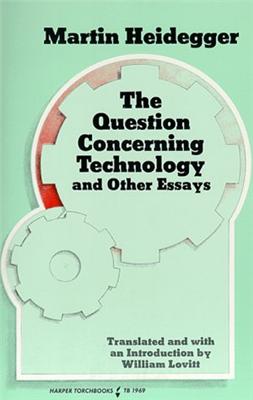
Written in 1955, The Question Concerning Technology is Heidegger’s attempt to grapple with the problem of technology’s “essence” – the problem being that the essence of something is not immediately and/or easily apparent when simply looking at that thing itself.
In other words, the essence of a particular piece of technology goes far beyond the simple function it performs; it is, instead, something that all technology participates in, determining the ends for which we use technology and the specific needs we feel.
This is true of most things, of course, but as technology both embodies the product of human action and aids in future human actions, its unique essence is both particularly hidden and particularly important to discover.
Heidegger admits as much in the opening paragraphs of his essay:
“Technology is not equivalent to the essence of technology. When we are seeking the essence of “tree,” we have to become aware that that which pervades every tree, as tree, is not itself a tree that can be encountered among all the other trees.
Likewise, the essence of technology is by no means anything technological. Thus we shall never experience our relationship to the essence of technology so long as we merely conceive and push forward the technological, put up with it, or evade it.
Everywhere we remain unfree and chained to technology, whether we passionately affirm or deny it. But we are delivered over to it in the worst possible way when we regard it as something neutral; for this conception of it, to which today we particularly like to do homage, makes us utterly blind to the essence of technology.”
These introductory thoughts of Heidegger’s also serve to introduce the Tony Stark of Iron Man 1…
As we meet him in the film, Tony has adopted a completely neutral view of Stark Tech., choosing to ignore the moral implications of being a weapons manufacturer. Delighting in the performance of his new Jericho missile while not even considering what it will look like when deployed in combat, he is naively blind to the true essence of this creation; the web of interests, hopes, and fears that its existence necessarily engenders#. Admittedly, that billionaire playboy Tony Stark would enter an actual warzone for a simple weapons demonstration is quite a logical leap in terms of premise, but from a Heideggerian viewpoint it does show how bound Tony is to his technology, circling the globe and putting his life at risk on its behalf – and the film immediately literalizes this bondage.
After being knocked unconscious by another of his own bombs – his technology now acting on behalf of other parties – Tony Stark awakens as a prisoner hooked to a battery responsible for keeping him alive. Fortunately, he’s smart enough to use his super-computer man brain to replace this battery by (somehow) building an arc reactor into his chest (the one that will eventually power his suits), and he escapes:
Tony is now forced to adopt a two-fold position, though: the technology that preserves his life is a positive, while his weapons technology is a negative.
He thus becomes driven to “push forward the technological” achievements of his prototype suit in pursuit of expanding his capabilities in the only way he knows how – by expanding the capabilities of his technological creations to require a singular level of mastery. Now that his life literally depends on technology, Tony feels its power over him, and he seeks to re-assert his mastery by doing the only thing he can think of: perfecting the suit, laboring under the assumption that by raising the complexity of the technology to a level of which only he is capable (therefore making the technology a means to only the ends he has in mind), that he alone will be able to control its ever-evolving power.

This mirrors Heidegger’s description of our reaction to the intuition that technology may upend the power dynamic we desire:
“Modern technology too is a means to an end. That is why the instrumental conception of technology conditions every attempt to bring man into the right relation to technology. Everything depends on our manipulating technology in the proper manner as a means. We will, as we say, ‘get’ technology ‘spiritually in hand.’ We will master it.
The will to mastery becomes all the more urgent the more technology threatens to slip from human control.”
Tony is demonstrating the typical behavior of someone approaching technology from an instrumental understanding, though Heidegger is quick to note that this is not incorrect, simply incomplete. After all, technology is pursued because it does actually give us abilities and resources we would otherwise lack.
Nevertheless, “the merely correct is not yet the true.”
If the essence of technology were simple instrumentality, it wouldn’t hold power over us…
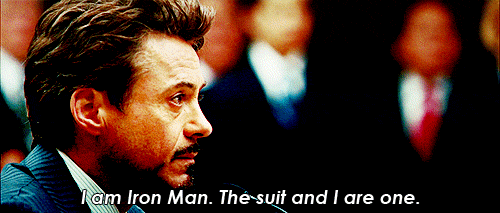
In a chain of reasoning not worth delving into, The Question Concerning Technology argues that instrumentality is a form of causation, causation has to do with bringing something forth, and that bringing something forth is essentially a revealing. Now, what Iron Man’s suit reveals about the Marvel Universe is a huge question, one that would require an in-universe Heidegger to answer, but what is revealed to (and about) Tony is much clearer.
The power of the Iron Man suit changes Tony’s perception of the world, revealing one in which all problems are inherently solvable through force. The suit gives Tony the power to rectify any situation – both those caused by his past actions and others outside his original sphere of influence – but because he still seeks mastery over his technology by keeping it to himself, it also imposes an expectation that he become the world’s problem-solver.
This expectation reveals a truth about technology that moves us one step closer to its true essence…
Technology’s ability to impose expectations is not limited to the Iron Man suits. In fact, this ability is what Heidegger uses to distinguish between classical technology, like axes and windmills, and “modern” technology, like a hydroelectric dam or industrialized farm. While a traditional tool has a particular use and therefore sets up a possible set of activities one can perform, thus partaking in the essence of technology on the whole, it does not reflect back the expectation that one use it.
That is, the tool does not regard its owner as a natural energy source through which its activity can be realized. The dam is different; the presence of the dam places the river in a position subservient to it.
But I’m stealing Heidegger’s own example; I’ll let him tell it:
“In the context of the interlocking processes pertaining to the orderly disposition of the electrical energy, even the Rhine itself appears as something at our command. The hydroelectric plant is not built into the Rhine River as was the old wooden bridge that joined bank with bank for hundreds of years. Rather the river is dammed up into the power plant. What the river is now, namely, a water power supplier, derives from out of the essence of the power station.”
This process, in which the technological makes demands on the natural world (which Heidegger designates “challenging”), is what’s at work in Iron Man when he comes to see himself as the world’s ultimate protector.
Though he has expressed, in more recent films, the desire to retire, Tony Stark is continually drawn into the action of the latest conflict. As long as his suits exist and challenge him forth, he can never sit idly by, even if he wanted to. With his conclusion in Iron Man 3 that the suits require a pilot, they have turned him into the resource that is continually challenged into providing the motive force necessary for the suits to act:
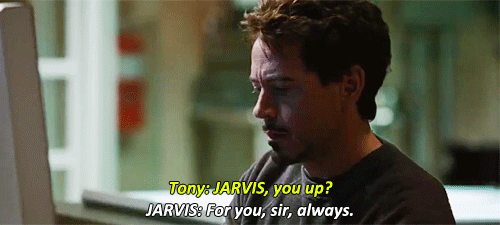
Yet Iron Man seems to restrain himself most of the time. After all, he appears in movies coming out at most once a year, with real-time gaps in between.
This is all part of the challenging…
As the technological challenges the natural world, it becomes necessary, or at least feels necessary, to order and secure these resources; to make sure they are available and at the ready when they are eventually needed. And because Tony himself is challenged, he feels compelled to keep himself ready at hand, available at a moment’s notice for the next time the world needs him.
Even when he is not directly acting as Iron Man, Tony Stark continues to feel the effects of the challenging, maintaining himself in a state more beneficial to his technology than to him:
Tony has become part of what Heidegger calls the “standing-reserve,” a concept he explains as follows:
“What kind of unconcealment is it, then, that is peculiar to that which comes to stand forth through this setting-upon that challenges? Everywhere everything is ordered to stand by, to be immediately at hand, indeed to stand there just so that it may be on call for a further ordering. Whatever is ordered about in this way has its own standing. We call it the standing-reserve.
The word expresses here something more, and something more essential, than mere “stock.” The name “standing-reserve” assumes the rank of an inclusive rubric. It designates nothing less than the way in which everything presences that is wrought upon by the challenging revealing. Whatever stands by in the sense of standing-reserve no longer stands over against us as object.”
The ending of this explanation is pretty obscure, requiring a broader understanding of the distinction in Heidegger’s thought between the way something can act as an object or the way it can act as a presence. Without worrying too much, the point is that Tony’s essential nature, his own essence, has been revealed to be nothing more than “standing-reserve.”
Through his altruistic impulse to use his abilities to better the world, Tony has lost his access to his individual will, instead now acting only on behalf of the ordering and securing impulse inherent in a world where everything is, as it is in his mind, challenged forth into standing-reserve:
One last definition remains. The specific “challenging claim which gathers man thither to order the self-revealing as standing-reserve”# Heidegger names “Enframing” – the perfect word for the ultimate concept that defines Iron Man.
Just as he imagines the power of the technological as something that surrounds us, that closes in and delimits our intellectual horizon, Iron Man’s power consists of making this force tangible and literal.
With a suit of armor that physically enframes his body, the natural disappears into the technological…
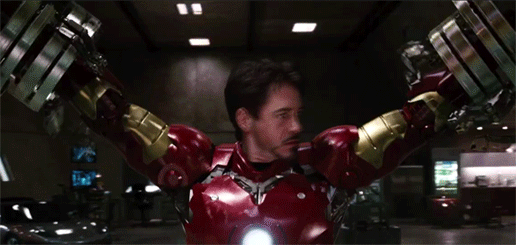
Really, Tony Stark’s six film (so far!) character arc – the essential push-and-pull of a man grappling with his sense of his enframement and his subsequent push back against it – can be encapsulated by Heidegger’s idea of Enframing (and everything it entails):
The first film is a joy; an expression of man’s power to innovate and find solutions to apparently intractable problems, though it knows a danger lurks in these powers if divorced from their creator. Later films then acknowledge this danger exists, even as Tony alone maintains control. The end of The Avengers, when Tony takes responsibility for flying the missile through the portal, sees the first major moment of Tony’s impulse to order and secure, but by Iron Man 3 he is already attempting to free himself from his Enframing and the challenging the suits exert by creating autonomous suits.
Tony’s ‘epiphany’ at the end of that film, that he is a fundamental component them, is nothing less than a man giving himself over completely to Enframement.
That’s why Avengers: Age of Ultron and Captain America: Civil War present an Iron Man whose only concerns are the ordering and securing characteristic of one approaching the world as “standing-reserve”:
When Tony Stark describes his dream for the Ultron Program, he calls it “a suit of armor around the world” – a thought rooted in his impulse to expand his own Enframement over the entire area where Enframing holds sway – and it is its subsequent failure (a disagreement over what a proper ordering and securing of Earth# would consist of) that leads Tony to seek a measure of security outside superheroes with the United Nations and the Sokovia Accords. His perception has become so warped that Captain America now appears to him as a force of chaos and disorder.
The ending of Civil War is a potent statement on the power of Enframing and the need to fight against it: Iron Man emerges battered and bruised but still with the force of law and the whole world on his side, while Captain America is driven underground to work covertly, a position the movie represents as heroic and of critical importance. However, if this sounds as if Iron Man, the original hero of the MCU, has turned into a villain, a mindless cog in the machine, do not despair. He has plenty more lucrative films to appear in, and the ending of “The Question Concerning Technology” even provides a blueprint for his redemption…
In a move stolen from Socrates, Heidegger quotes poetry:
“where danger is, grows / The saving power also.”
This ‘saving power’ remains quite ambiguous, but part of it is a prompting to reconsider the very meaning of “essence.”
That might be quite the challenge to realize on-screen (and it’s unclear how it could be relevant to superheroic, intergalactic conflicts), but Iron Man’s journey has been so fundamentally metaphysical already that nothing seems impossible for these films anymore…
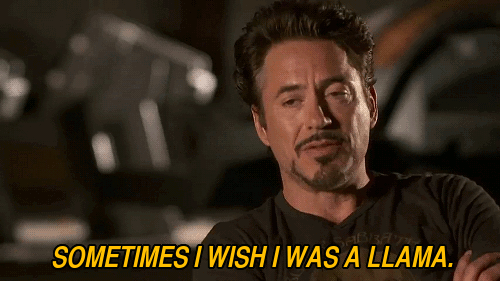
Submitted To Film, Superheroes, Television, The Internet of Things
Like what you read? Share it.
(That helps us.)
Love what you read? Patronize Danny Sullivan.
That helps us and the writer.
What is Patronizing? Learn more here.


